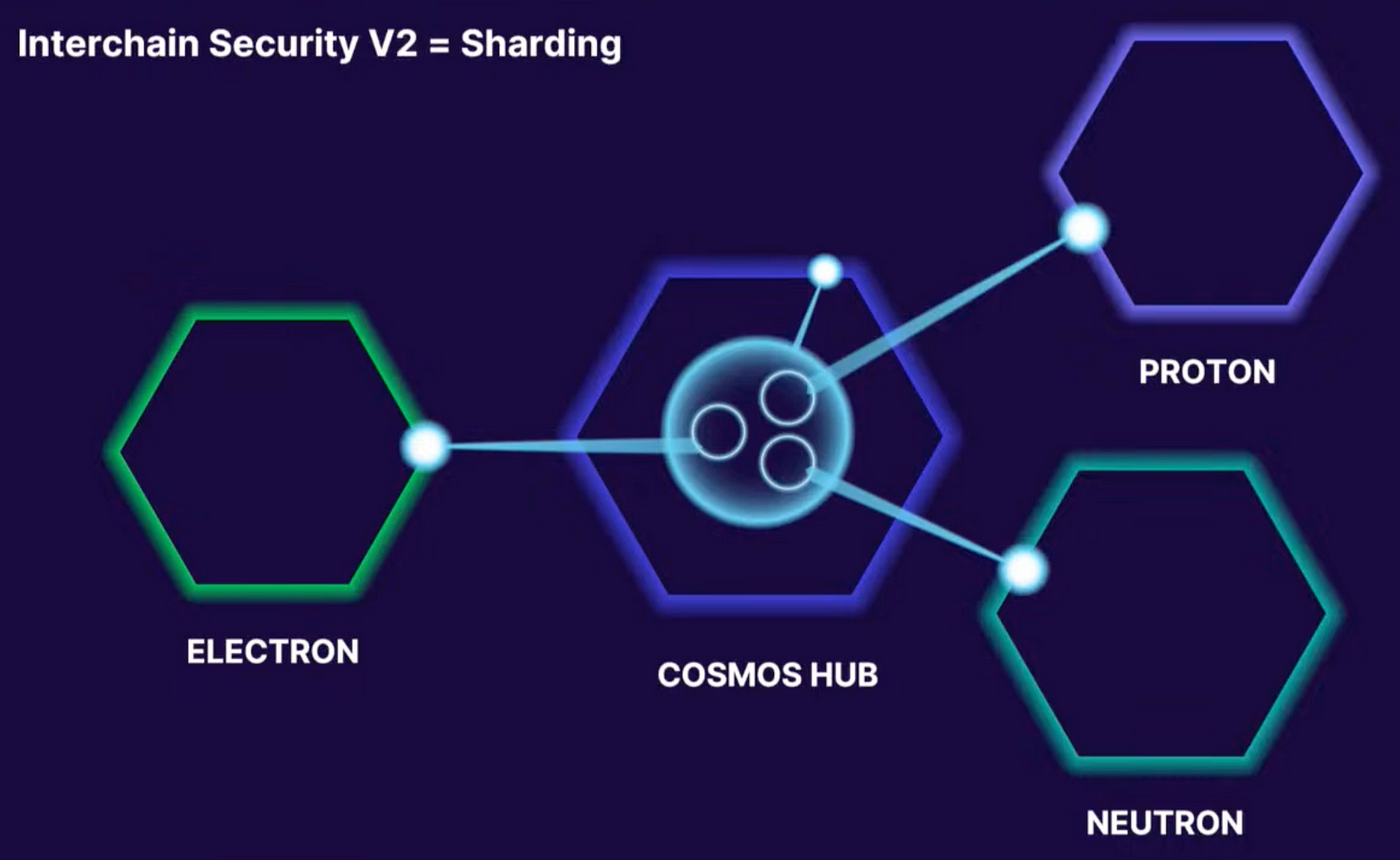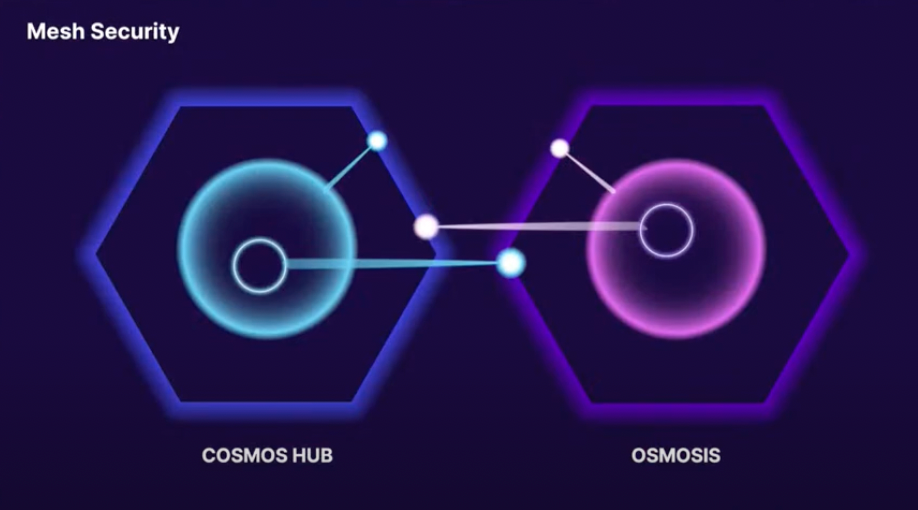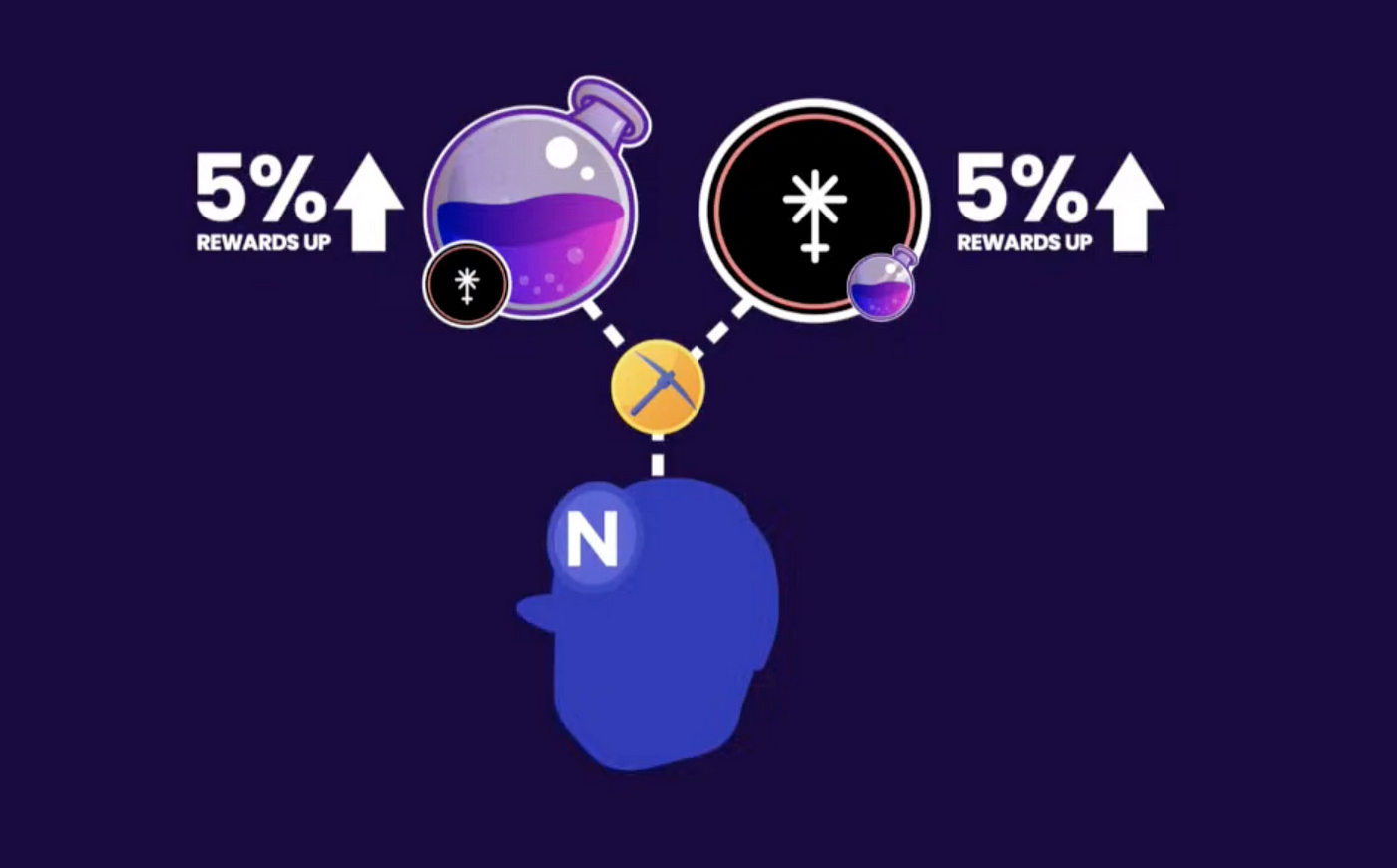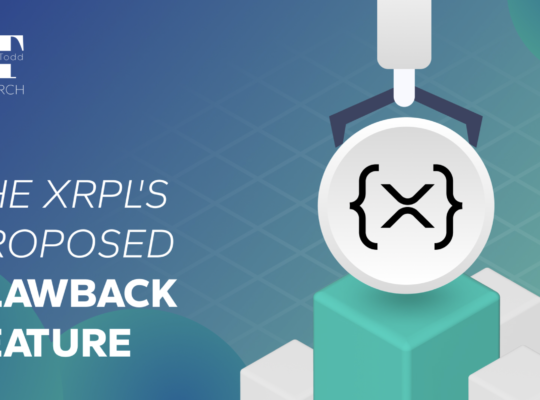Cosmoverse 2022 has just wrapped up in Medellin, Colombia and what an incredible week it was. Over 1,400 attendees gathered for 3 days of top-notch projects and speakers, who shared both exciting announcements (such as the upcoming native issuance of USDC on Cosmos) as well as thought-leadership on the future of the ecosystem as a whole.
One such presentation was that by Sunny Agrawal of Osmosis Labs, who discussed Mesh Security.
In short: the Hub-and-Spoke model of Cosmos as it stands isn’t enough as it lacks true sovereignty and is a model already present in other systems such as Polkadot. What’s needed is a mesh system comparable to NATO, where blockchains, especially those interwoven economically, provide security to each other while still maintaining independent sovereignty.
This relates to Interchain Security: the Cosmos-specific category of shared security that uses Inter-Blockchain Communication (IBC).
Mesh Security refers to Interchain Security V3 run bidirectionally, whereby Cosmos-based chains also provide security back to Cosmos Hub.
Mesh Security refers to Interchain Security V3 run bidirectionally, whereby Cosmos-based chains also provide security back to Cosmos Hub.
Below I’ll be discussing just what this entails, and how it relates to the Cosmos ecosystem as it stands today.
Why is InterChain Security Important?
Interchain Security was defined above and refers to the ability of a larger blockchain (i.e. Cosmos Hub) to share security by lending cryptocurrency capital to smaller chains. This is important because staking in a blockchain increases network security, yet smaller blockchains tend to have less value staked and as such are more prone to attacks by malicious actors.
Given that Cosmos intends to be an Internet of Blockchain with an easy-to-use SDK, smaller blockchains must be assured that they’re secure as well. As such, Interchain Security is very important to the Cosmos ecosystem and a strong selling point in attracting new developers.
Interchain Security is currently at V1 which refers to Cosmos Hub providing security to single chains.
V2 is in progress and refers to Cosmos Hub providing security to multiple chains by having a subset of their Validators choosing to validate other chains as well.

This is great, but there’s still no sovereignty. V3 expands upon V2 by enabling Cosmos-based blockchains to have their own sovereign validators as well.

Mesh Security takes this one step further and can in turn be combined with superfluid staking, an idea introduced at Cosmoverse 2021, to create a concept known as interfluid staking (which I’ll explain below!).
Mesh Security
Hub-and-Spoke blockchains are not enough as they’re already being worked on and do not actually provide sovereignty. In order for Cosmos to truly become decentralized without a chain at the centre, it must become a system of interconnected blockchains that can secure one another, rather than only being secured by Cosmos Hub.
Mesh Security does this by taking Interchain Security V3 and running it bidirectionally, as shown below.

This idea draws very strong similarities to NATO and was a metaphor used by Sunny in his speech. Despite all the challenges happening at the moment, if we zoom out on the evolutionary timeline of humans, we’ve never had as much security as we do at present. NATO is a great example whereby if one member is attacked, all others are obliged to come to their protection, ensuring mutual security in the event of a malicious attack.
Non-coincidentally, these NATO members are also heavily intertwined economically, as high levels of economic integration are typically associated with high levels of security integration.
The same is being done in Cosmos. In the context of Osmosis and Axelar Network, they are heavily intertwined economically as Osmosis represents ~69% ($62.9M) of Axelar’s total TVL moved to Cosmo as of October 6th, 2022. Additinally, 4 of the top 10 assets on Osmosis are bridged by Axelar. Therefore, it makes sense that they also intertwine their security.
This is the idea of cross-chain staking and is how Mesh Security is done.
Cross-Chain Staking
As might be expected, many Cosmos-based blockchains actually share an overlap in terms of their validators. For example, Sunny referenced a graph created by Numia that used data from Mintscan, where it’s seen that 75% of the validators on Juno are also running validators on Osmosis. And in turn, 72% of Osmosis validators also validate on Juno.

The concept is that a Validator could validate transactions on both Osmosis and Juno. They could then be incentivized to have good behaviour across both chains, and be slashed across both chains as well in the event of validating a wrong block.
And by correlating their identity across both chains, they could be rewarded with additional incentives. In turn, they’d be considered more trustworthy and new delegators would choose those that engage in cross-staking as they’re more incentivized towards good behaviour.

Would this result in excessive voting power for a validator? Couldn’t a significant validator overtake Osmosis? The solution is that voting power could be capped so that even if they stake 8% of all tokens, they may be capped at 2% voting power.
What about centralization of validators? This is in fact good as it shows overlap of communities across the various chains, and we should be taking advantage of this.
Interfluid Staking
At Cosmoverse 2021 Sunny explained superfluid staking, whereby one could both be a liquidity provider and staker at the same time, similar to liquid staking. The idea of it is that one could drop assets into a liquidity pool (e.g. OSMO/JUNO) and receives a Liquidity Provider (LP) share that has underlying economic value to it, which can then be staked itself. It follows the normal rules of staking (for example, it still has an unbonding period) but also enables a message to be sent via IBC to the blockchain that corresponds with the other token in any Osmosis-based liquidity pool (e.g. Juno for a OSMO/JUNO pair). This can be done to let the JUNO tokens superfluid staked within the OSMO/JUNO pool to also provide security to Juno’s chain itself.
This superfluid staking can be combined with mesh security to provide what’s known as Interfluid Staking.
Interfluid Staking = Superfluid + Cross-Chain Staking
Conclusion
Interchain Security is currently at phase V1 whereby Cosmos Hub can provide security to individual chains. During his presentation at Cosmoverse 2022, Sunny outlined his vision for Mesh Security which is Interchain Security V3 that’s run bidirectionally.
Mesh Security entails each Cosmos-based blockchain providing security to each other, including to Cosmos Hub itself. This can be done by incentivizing validators active across multiple blockchains to correlate their identities, and in turn slashing them across multiple blockchains in the event of poor performance on any given one.
In turn, this can be combined with superfluid staking, an idea first proposed at Cosmoverse 2021, to create interfluid staking where not only security but staking can be shared throughout the Cosmos ecosystem in a safe and secure manner.






